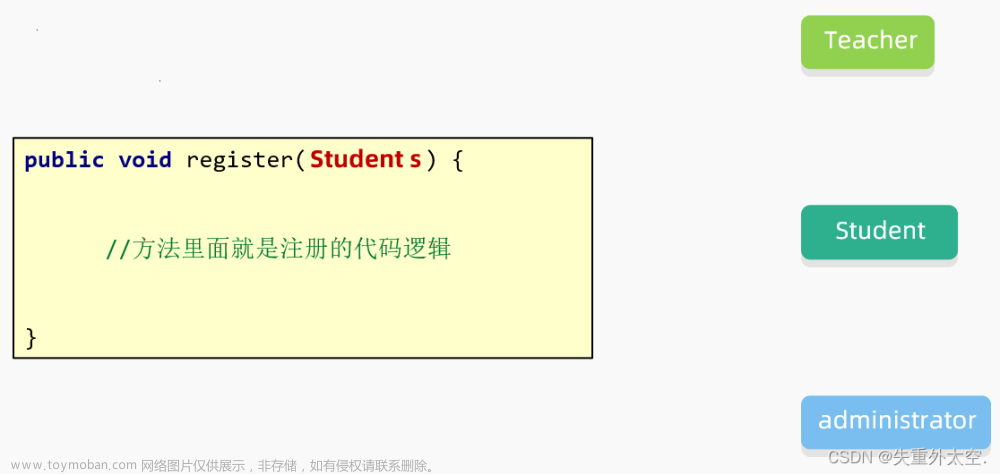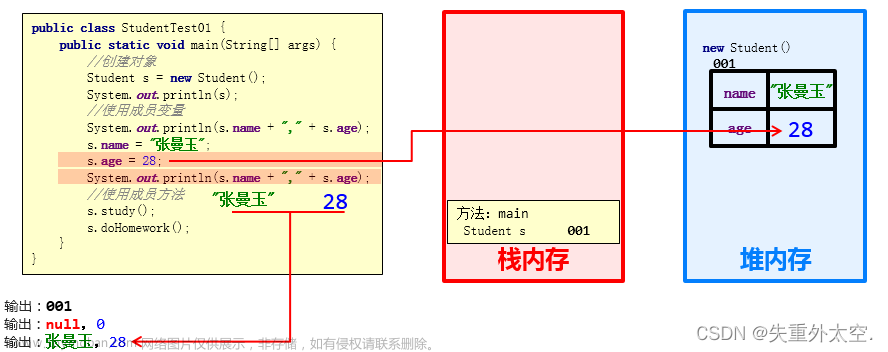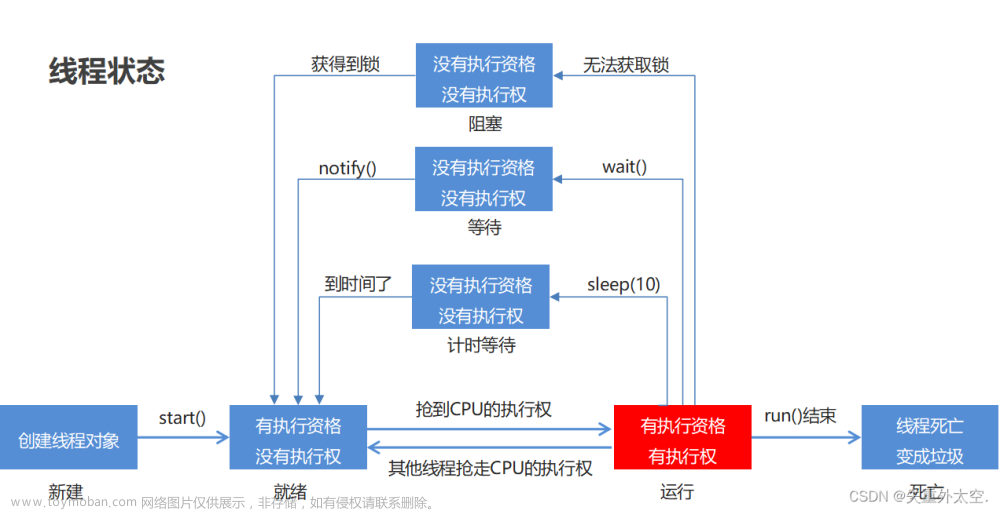JDK8时间相关类
| JDK8时间类类名 | 作用 |
|---|---|
| ZoneId | 时区 |
| Instant | 时间戳 |
| ZoneDateTime | 带时区的时间 |
| DateTimeFormatter | 用于时间的格式化和解析 |
| LocalDate | 年、月、日 |
| LocalTime | 时、分、秒 |
| LocalDateTime | 年、月、日、时、分、秒 |
| Duration | 时间间隔(秒,纳,秒) |
| Period | 时间间隔(年,月,日) |
| ChronoUnit | 时间间隔(所有单位) |
1.1 ZoneId 时区
/*
static Set<string> getAvailableZoneIds() 获取Java中支持的所有时区
static ZoneId systemDefault() 获取系统默认时区
static Zoneld of(string zoneld) 获取一个指定时区
*/
//1.获取所有的时区名称
Set<String> zoneIds = ZoneId.getAvailableZoneIds();
System.out.println(zoneIds.size());//600
System.out.println(zoneIds);// Asia/Shanghai
//2.获取当前系统的默认时区
ZoneId zoneId = ZoneId.systemDefault();
System.out.println(zoneId);//Asia/Shanghai
//3.获取指定的时区
ZoneId zoneId1 = ZoneId.of("Asia/Pontianak");
System.out.println(zoneId1);//Asia/Pontianak
1.2 Instant 时间戳
/*
static Instant now() 获取当前时间的Instant对象(标准时间)
static Instant ofXxxx(long epochMilli) 根据(秒/毫秒/纳秒)获取Instant对象
ZonedDateTime atZone(ZoneIdzone) 指定时区
boolean isxxx(Instant otherInstant) 判断系列的方法
Instant minusXxx(long millisToSubtract) 减少时间系列的方法
Instant plusXxx(long millisToSubtract) 增加时间系列的方法
*/
//1.获取当前时间的Instant对象(标准时间)
Instant now = Instant.now();
System.out.println(now);
//2.根据(秒/毫秒/纳秒)获取Instant对象
Instant instant1 = Instant.ofEpochMilli(0L);
System.out.println(instant1);//1970-01-01T00:00:00z
Instant instant2 = Instant.ofEpochSecond(1L);
System.out.println(instant2);//1970-01-01T00:00:01Z
Instant instant3 = Instant.ofEpochSecond(1L, 1000000000L);
System.out.println(instant3);//1970-01-01T00:00:027
//3. 指定时区
ZonedDateTime time = Instant.now().atZone(ZoneId.of("Asia/Shanghai"));
System.out.println(time);
//4.isXxx 判断
Instant instant4=Instant.ofEpochMilli(0L);
Instant instant5 =Instant.ofEpochMilli(1000L);
//5.用于时间的判断
//isBefore:判断调用者代表的时间是否在参数表示时间的前面
boolean result1=instant4.isBefore(instant5);
System.out.println(result1);//true
//isAfter:判断调用者代表的时间是否在参数表示时间的后面
boolean result2 = instant4.isAfter(instant5);
System.out.println(result2);//false
//6.Instant minusXxx(long millisToSubtract) 减少时间系列的方法
Instant instant6 =Instant.ofEpochMilli(3000L);
System.out.println(instant6);//1970-01-01T00:00:03Z
Instant instant7 =instant6.minusSeconds(1);
System.out.println(instant7);//1970-01-01T00:00:02Z
1.3 ZoneDateTime 带时区的时间
/*
static ZonedDateTime now() 获取当前时间的ZonedDateTime对象
static ZonedDateTime ofXxxx(。。。) 获取指定时间的ZonedDateTime对象
ZonedDateTime withXxx(时间) 修改时间系列的方法
ZonedDateTime minusXxx(时间) 减少时间系列的方法
ZonedDateTime plusXxx(时间) 增加时间系列的方法
*/
//1.获取当前时间对象(带时区)
ZonedDateTime now = ZonedDateTime.now();
System.out.println(now);
//2.获取指定的时间对象(带时区)1/年月日时分秒纳秒方式指定
ZonedDateTime time1 = ZonedDateTime.of(2023, 10, 1,
11, 12, 12, 0, ZoneId.of("Asia/Shanghai"));
System.out.println(time1);
//通过Instant + 时区的方式指定获取时间对象
Instant instant = Instant.ofEpochMilli(0L);
ZoneId zoneId = ZoneId.of("Asia/Shanghai");
ZonedDateTime time2 = ZonedDateTime.ofInstant(instant, zoneId);
System.out.println(time2);
//3.withXxx 修改时间系列的方法
ZonedDateTime time3 = time2.withYear(2000);
System.out.println(time3);
//4. 减少时间
ZonedDateTime time4 = time3.minusYears(1);
System.out.println(time4);
//5.增加时间
ZonedDateTime time5 = time4.plusYears(1);
System.out.println(time5);
1.4DateTimeFormatter 用于时间的格式化和解析
/*
static DateTimeFormatter ofPattern(格式) 获取格式对象
String format(时间对象) 按照指定方式格式化
*/
//获取时间对象
ZonedDateTime time = Instant.now().atZone(ZoneId.of("Asia/Shanghai"));
// 解析/格式化器
DateTimeFormatter dtf1=DateTimeFormatter.ofPattern("yyyy-MM-dd HH:mm;ss EE a");
// 格式化
System.out.println(dtf1.format(time));
1.5LocalDate 年、月、日
//1.获取当前时间的日历对象(包含 年月日)
LocalDate nowDate = LocalDate.now();
//System.out.println("今天的日期:" + nowDate);
//2.获取指定的时间的日历对象
LocalDate ldDate = LocalDate.of(2023, 1, 1);
System.out.println("指定日期:" + ldDate);
System.out.println("=============================");
//3.get系列方法获取日历中的每一个属性值//获取年
int year = ldDate.getYear();
System.out.println("year: " + year);
//获取月//方式一:
Month m = ldDate.getMonth();
System.out.println(m);
System.out.println(m.getValue());
//方式二:
int month = ldDate.getMonthValue();
System.out.println("month: " + month);
//获取日
int day = ldDate.getDayOfMonth();
System.out.println("day:" + day);
//获取一年的第几天
int dayofYear = ldDate.getDayOfYear();
System.out.println("dayOfYear:" + dayofYear);
//获取星期
DayOfWeek dayOfWeek = ldDate.getDayOfWeek();
System.out.println(dayOfWeek);
System.out.println(dayOfWeek.getValue());
//is开头的方法表示判断
System.out.println(ldDate.isBefore(ldDate));
System.out.println(ldDate.isAfter(ldDate));
//with开头的方法表示修改,只能修改年月日
LocalDate withLocalDate = ldDate.withYear(2000);
System.out.println(withLocalDate);
//minus开头的方法表示减少,只能减少年月日
LocalDate minusLocalDate = ldDate.minusYears(1);
System.out.println(minusLocalDate);
//plus开头的方法表示增加,只能增加年月日
LocalDate plusLocalDate = ldDate.plusDays(1);
System.out.println(plusLocalDate);
//-------------
// 判断今天是否是你的生日
LocalDate birDate = LocalDate.of(2000, 1, 1);
LocalDate nowDate1 = LocalDate.now();
MonthDay birMd = MonthDay.of(birDate.getMonthValue(), birDate.getDayOfMonth());
MonthDay nowMd = MonthDay.from(nowDate1);
System.out.println("今天是你的生日吗? " + birMd.equals(nowMd));//今天是你的生日吗?
1.6 LocalTime 时、分、秒
// 获取本地时间的日历对象。(包含 时分秒)
LocalTime nowTime = LocalTime.now();
System.out.println("今天的时间:" + nowTime);
int hour = nowTime.getHour();//时
System.out.println("hour: " + hour);
int minute = nowTime.getMinute();//分
System.out.println("minute: " + minute);
int second = nowTime.getSecond();//秒
System.out.println("second:" + second);
int nano = nowTime.getNano();//纳秒
System.out.println("nano:" + nano);
System.out.println("------------------------------------");
System.out.println(LocalTime.of(8, 20));//时分
System.out.println(LocalTime.of(8, 20, 30));//时分秒
System.out.println(LocalTime.of(8, 20, 30, 150));//时分秒纳秒
LocalTime mTime = LocalTime.of(8, 20, 30, 150);
//is系列的方法
System.out.println(nowTime.isBefore(mTime));
System.out.println(nowTime.isAfter(mTime));
//with系列的方法,只能修改时、分、秒
System.out.println(nowTime.withHour(10));
//plus系列的方法,只能修改时、分、秒
System.out.println(nowTime.plusHours(10));
1.7 LocalDateTime 年、月、日、时、分、秒
// 当前时间的的日历对象(包含年月日时分秒)
LocalDateTime nowDateTime = LocalDateTime.now();
System.out.println("今天是:" + nowDateTime);//今天是:
System.out.println(nowDateTime.getYear());//年
System.out.println(nowDateTime.getMonthValue());//月
System.out.println(nowDateTime.getDayOfMonth());//日
System.out.println(nowDateTime.getHour());//时
System.out.println(nowDateTime.getMinute());//分
System.out.println(nowDateTime.getSecond());//秒
System.out.println(nowDateTime.getNano());//纳秒
// 日:当年的第几天
System.out.println("dayofYear:" + nowDateTime.getDayOfYear());
//星期
System.out.println(nowDateTime.getDayOfWeek());
System.out.println(nowDateTime.getDayOfWeek().getValue());
//月份
System.out.println(nowDateTime.getMonth());
System.out.println(nowDateTime.getMonth().getValue());
LocalDate ld = nowDateTime.toLocalDate();
System.out.println(ld);
LocalTime lt = nowDateTime.toLocalTime();
System.out.println(lt.getHour());
System.out.println(lt.getMinute());
System.out.println(lt.getSecond());
1.8 Duration 时间间隔(秒,纳,秒)
// 本地日期时间对象。
LocalDateTime today = LocalDateTime.now();
System.out.println(today);
// 出生的日期时间对象
LocalDateTime birthDate = LocalDateTime.of(2000, 1, 1, 0, 0, 0);
System.out.println(birthDate);
Duration duration = Duration.between(birthDate, today);//第二个参数减第一个参数
System.out.println("相差的时间间隔对象:" + duration);
System.out.println("============================================");
System.out.println(duration.toDays());//两个时间差的天数
System.out.println(duration.toHours());//两个时间差的小时数
System.out.println(duration.toMinutes());//两个时间差的分钟数
System.out.println(duration.toMillis());//两个时间差的毫秒数
System.out.println(duration.toNanos());//两个时间差的纳秒数
1.9 Period 时间间隔(年,月,日)
// 当前本地 年月日
LocalDate today = LocalDate.now();
System.out.println(today);
// 生日的 年月日
LocalDate birthDate = LocalDate.of(2000, 1, 1);
System.out.println(birthDate);
Period period = Period.between(birthDate, today);//第二个参数减第一个参数
System.out.println("相差的时间间隔对象:" + period);
System.out.println(period.getYears());
System.out.println(period.getMonths());
System.out.println(period.getDays());
System.out.println(period.toTotalMonths());
1.10 ChronoUnit 时间间隔(所有单位)
// 当前时间
LocalDateTime today = LocalDateTime.now();
System.out.println(today);
// 生日时间
LocalDateTime birthDate = LocalDateTime.of(2000, 1, 1,0, 0, 0);
System.out.println(birthDate);
System.out.println("相差的年数:" + ChronoUnit.YEARS.between(birthDate, today));
System.out.println("相差的月数:" + ChronoUnit.MONTHS.between(birthDate, today));
System.out.println("相差的周数:" + ChronoUnit.WEEKS.between(birthDate, today));
System.out.println("相差的天数:" + ChronoUnit.DAYS.between(birthDate, today));
System.out.println("相差的时数:" + ChronoUnit.HOURS.between(birthDate, today));
System.out.println("相差的分数:" + ChronoUnit.MINUTES.between(birthDate, today));
System.out.println("相差的秒数:" + ChronoUnit.SECONDS.between(birthDate, today));
System.out.println("相差的毫秒数:" + ChronoUnit.MILLIS.between(birthDate, today));
System.out.println("相差的微秒数:" + ChronoUnit.MICROS.between(birthDate, today));
System.out.println("相差的纳秒数:" + ChronoUnit.NANOS.between(birthDate, today));
System.out.println("相差的半天数:" + ChronoUnit.HALF_DAYS.between(birthDate, today));
System.out.println("相差的十年数:" + ChronoUnit.DECADES.between(birthDate, today));
System.out.println("相差的世纪(百年)数:" + ChronoUnit.CENTURIES.between(birthDate, today));
System.out.println("相差的千年数:" + ChronoUnit.MILLENNIA.between(birthDate, today));
System.out.println("相差的纪元数:" + ChronoUnit.ERAS.between(birthDate, today));
后记
👉👉💕💕美好的一天,到此结束,下次继续努力!欲知后续,请看下回分解,写作不易,感谢大家的支持!! 🌹🌹🌹文章来源地址https://www.toymoban.com/news/detail-679993.html
文章来源:https://www.toymoban.com/news/detail-679993.html
到了这里,关于从零开始学习 Java:简单易懂的入门指南之JDK8时间相关类(十八)的文章就介绍完了。如果您还想了解更多内容,请在右上角搜索TOY模板网以前的文章或继续浏览下面的相关文章,希望大家以后多多支持TOY模板网!










